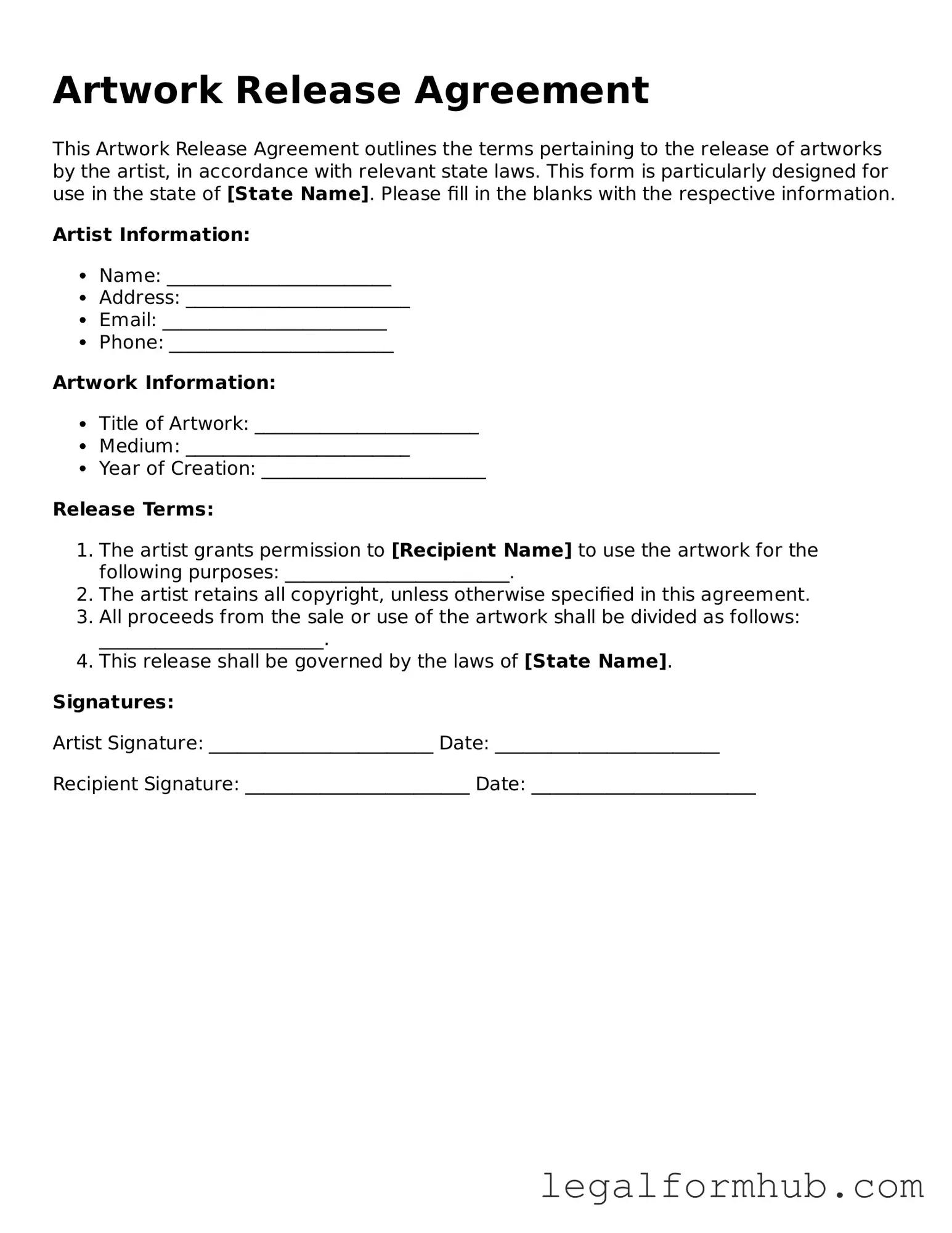The Artwork Release form shares similarities with the Model Release form. Both documents serve to protect the rights of the creator and the individual involved. In the case of a Model Release, it is specifically used when a person’s likeness is captured in photographs or videos. By signing this document, the model grants permission for their image to be used in various media, just as an artist grants permission for their artwork to be reproduced or displayed. This mutual agreement helps prevent future disputes regarding the use of images or artwork.
Another document akin to the Artwork Release form is the Property Release form. This form is essential when a photographer or artist wishes to use images of private property, such as homes or businesses, in their work. Just like the Artwork Release, the Property Release ensures that the creator has permission to use the property in their project. This helps safeguard against legal issues that may arise from using someone else's property without consent, ensuring that all parties are on the same page.
The Licensing Agreement is also comparable to the Artwork Release form. This document outlines the terms under which artwork can be used by another party, specifying the scope and limitations of that use. Much like the Artwork Release, a Licensing Agreement protects the rights of the creator while allowing others to utilize their work. It establishes clear guidelines for usage, ensuring that the artist is compensated fairly and that their work is respected.
In the realm of legal documents related to creative works, understanding various agreements is crucial for protecting individual rights and clarifying usage permissions. For instance, the Fillable Forms associated with vehicle ownership transfer emphasize the importance of clear agreements in establishing accountability. Similar to other release forms, this document allows one party to transfer liability to another, ensuring both parties are aware of their responsibilities. Without such legal clarity, potential disputes may arise, underscoring the necessity for comprehensive documentation in different creative and transactional contexts.
Similarly, the Copyright Assignment form is related to the Artwork Release. When an artist transfers their copyright to another party, this form is essential. It formally assigns the rights to reproduce, distribute, and display the artwork to someone else. Like the Artwork Release, it is crucial for defining ownership and usage rights, helping to prevent misunderstandings about who holds the rights to the artwork.
Lastly, the Non-Disclosure Agreement (NDA) can also be viewed as similar to the Artwork Release form. While the NDA focuses on confidentiality, it can be relevant in situations where an artist shares their work with potential clients or collaborators. This agreement ensures that sensitive information about the artwork or the creative process remains private. Like the Artwork Release, it fosters trust between parties and protects the interests of the creator.
